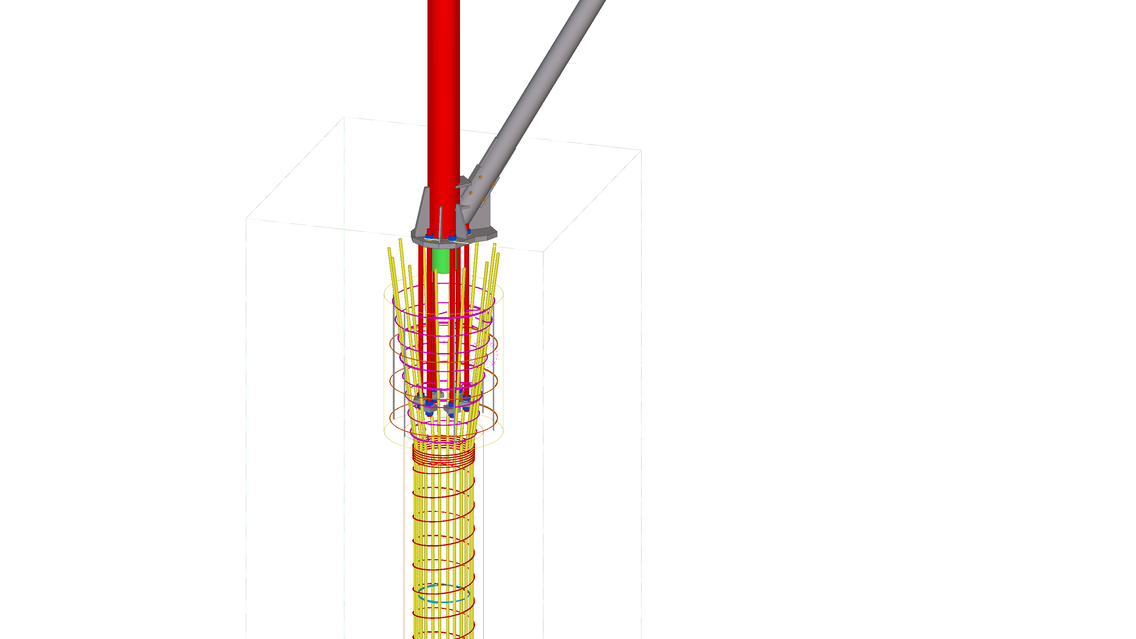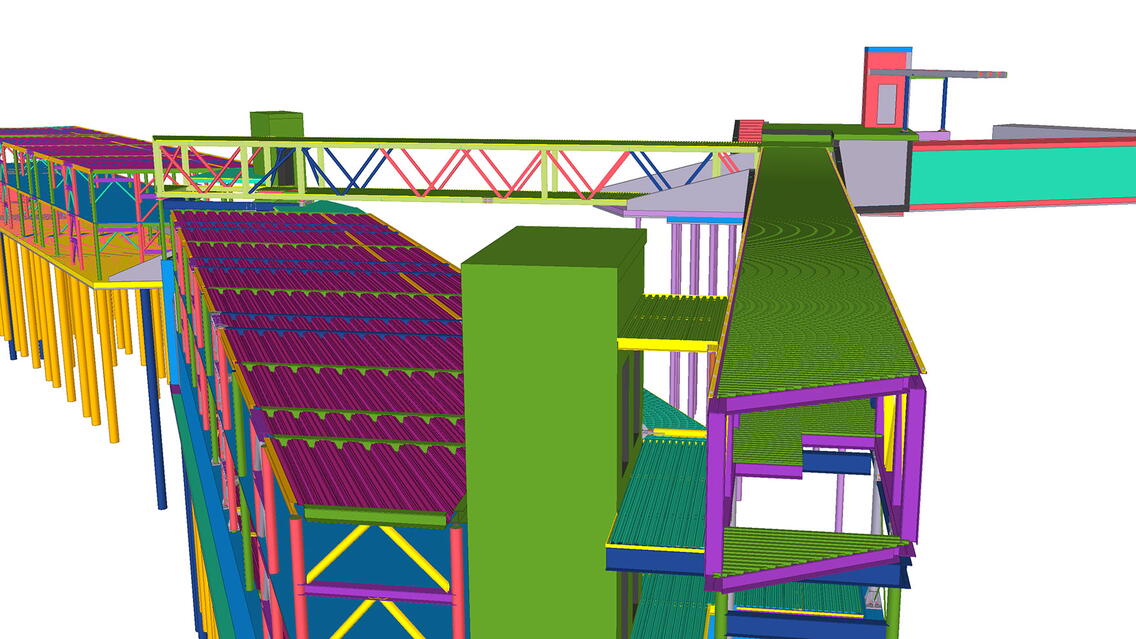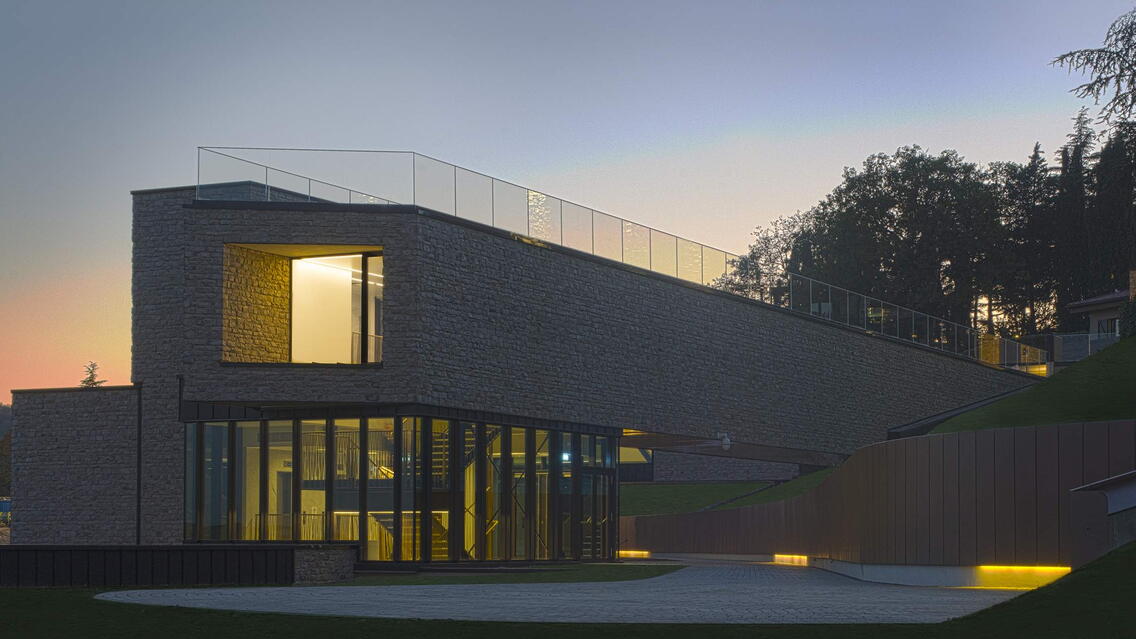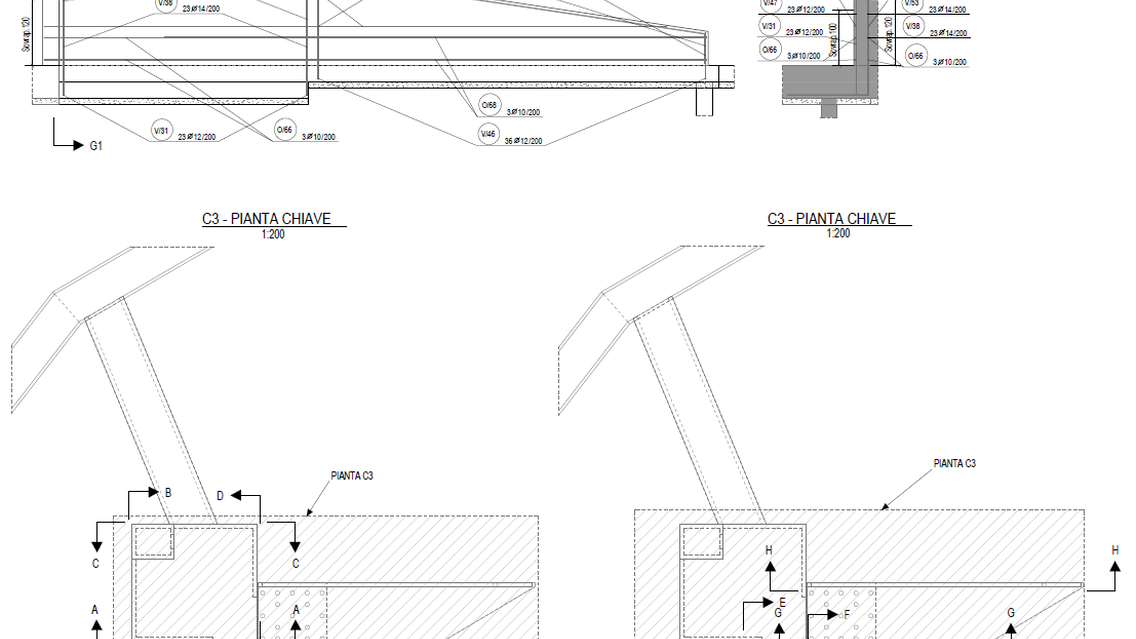The project concerns the expansion of 44 new rooms within the prestigious Resort Palazzo di Varignana (Municipality of Castel San Pietro). The complex is located on a natural slope.
The load-bearing structure of the buildings is in steel, characterized by support elements in a composite circular tubular profile (therefore filled with concrete and longitudinal reinforcements); the horizontal load-bearing elements are made up of beams with differentiated wings in order to be able to hold the thick collaborating trapezoidal sheet metal on the lower wing on spans of about 5.0m, to be integrated with reinforcement before the lightened casting. The structural floor has a height of 300mm.
The definition of the structural scheme comes from a study on the distribution of structural elements that resists horizontal actions in order to minimize the torsional effects typical of buildings with these configurations in plan (very elongated).
The three blocks that constitute the rooms are dynamically independent because they are jointed with respect to the staircase bodies.
These parts are designed with a steel reticular structure, with spans between 40 and 50m. The two elevator cores, made of reinforced concrete, act as a bracing in the direction orthogonal to the axis of the tunnels. The connecting tunnels are set on special restraining devices that allow longitudinal movements due to thermal expansion.
The fixed restraint is located at the opposite end of the building, at the basement block of building C. The foundations used here are also deep.
The load-bearing structures rest directly on the foundation piles, by means of a specific study of the arrangement of the pile reinforcement and of the elements for the anchoring of the metal structures according to precise execution schemes.
Special challenges
Considering the fact that the structure is designed on the very sloped versant and for an extension of a project of over 200m the importance of geometric control and tracing of each element is of considerable importance. This fact in addition to the difficulty of predicting the perfect alignment of the elevation structures with the underlying foundation piles.
The geometric articulation of the three structural bodies takes on greater complexity as they support elements of two connecting bridges converging to an existing tunnel.
For functional and aesthetic reasons, the arrangement of the load-bearing and seismic bracing structures is mainly arranged at an angle of inclination of 60° with respect to the longitudinal facades.
This aspect has involved a special study of the connection nodes, the cuts in the trapezoidal sheets, the arrangement of the beams and the connections to the stiffening elements in reinforced concrete, keeping the center of gravity as close as possible to the center of gravity of the masses, minimizing torsional movements.
What made the project successful?
The success of the project was teamwork and collaboration with the entire team.



